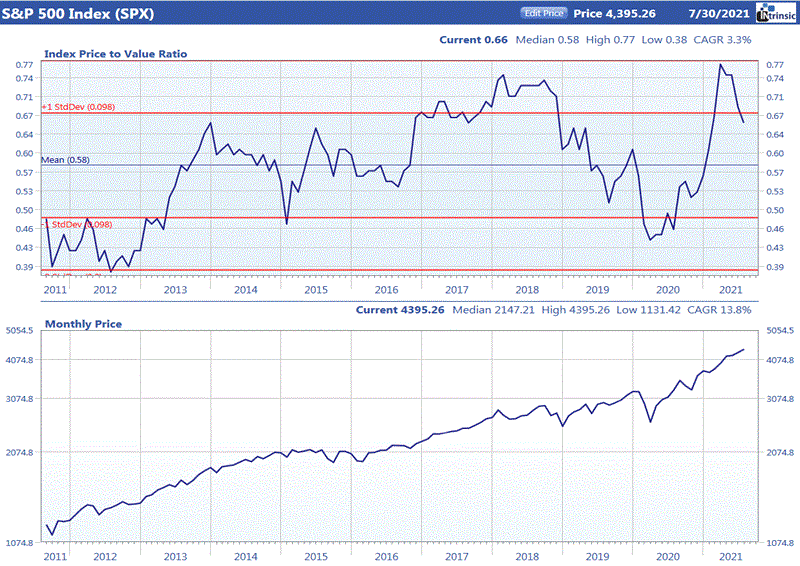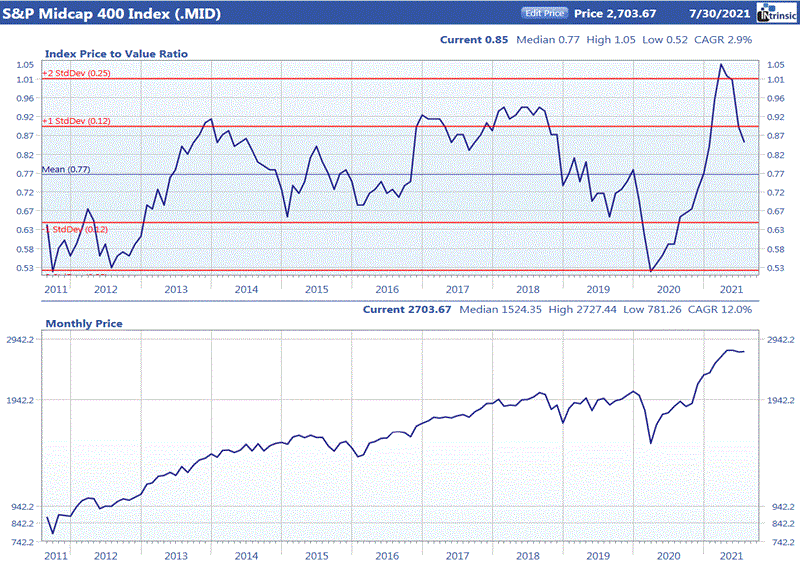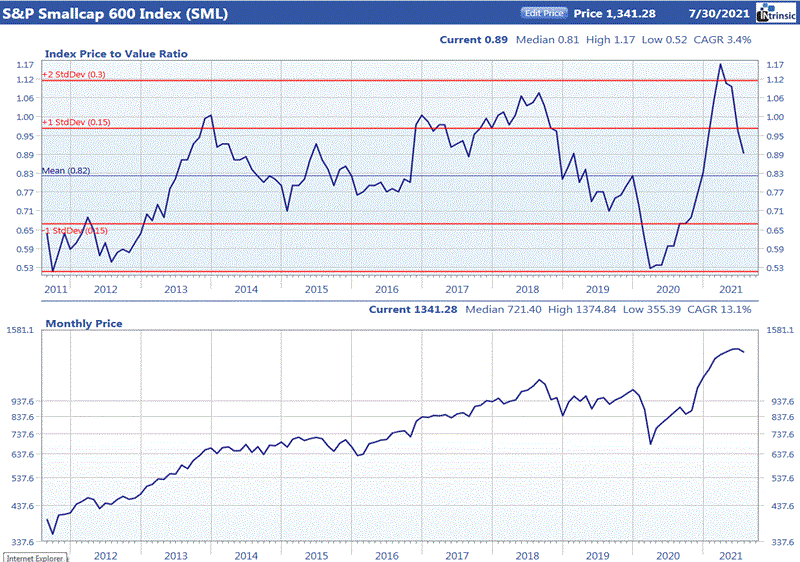Market Briefing
August 2021
Stock market averages posted mixed results in June as economic headlines had investors vacillating between favoring cyclical or growth issues and ultimately choosing the latter to close the month. Large and small cap indexes outperformed mid-caps in June. The economic news was mostly positive with manufacturing and payrolls reports coEquities posted mixed results in July with large cap stock averages ending higher, mid cap averages about flat, and the average returns for small caps losing ground during the month. Economic news continued to be positive for the month with strong manufacturing, payrolls, and retail sales reports. However, an increase in Covid cases linked to a variant virus strain had the market looking to a possible weakening economy. The resulting mid-month equities price correction was short lived as investors continued the practice of buying market dips. Earnings season got underway with a high number of companies beating analyst estimates by large margins. The consumer price index for June came in higher than the prior month. Senate negotiators announced an infrastructure spending deal. GDP for Q2 rose at a solid 6.5% annual rate. Investors favored high quality, large cap stocks during the month. Ford quality rating, market capitalization, share buyback and dividend growth were among the best performing stock selection factors for July. In a reversal from last month, growth and momentum factors produced the poorest results. Earnings trend, earnings surprise, projected growth rate and price momentum were at the bottom of the factor performance list. Roughly a quarter of the industry groups we cover had positive average price changes for the month. Some of the best performers were in the materials sector sector including steel, aluminum and copper. Higher yielding groups such as electric utilities and real estate investment trusts had positive average price changes. The oil-industry related groups were among the worst performers in July, reversing the strong performance they had the prior month.
Value of the Market



Ford’s price to value ratio (PVA) is computed by dividing the price of a company’s stock by the value derived from a proprietary intrinsic value model. A PVA greater than 1.00 indicates that a company is overpriced while a PVA less than 1.00 implies that a stock is trading below the level justified by its earnings, quality rating, dividends, projected growth rate, and prevailing interest rates. While looking at the PVA for an individual company can give a good indication of its value, the average PVA for the market as a whole can provide insight into current valuation levels.
Source: Ford Equity Research
